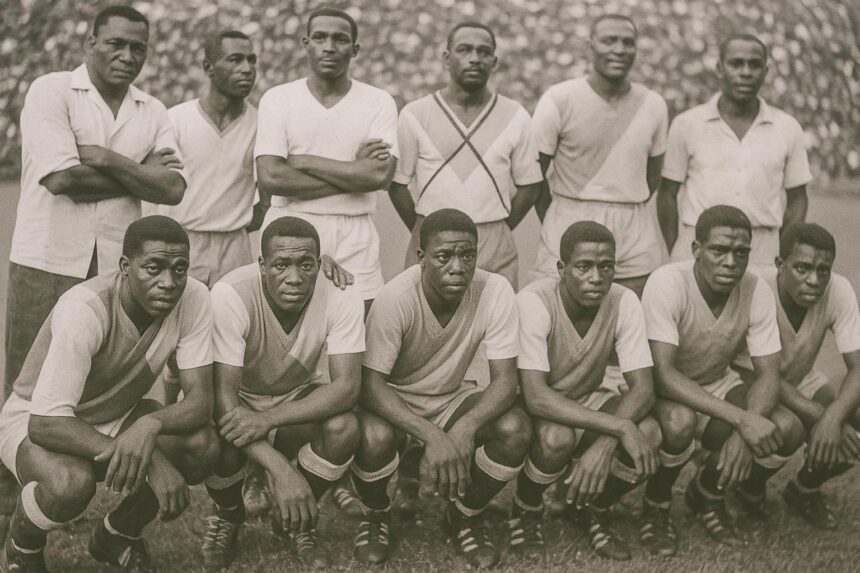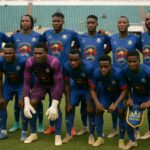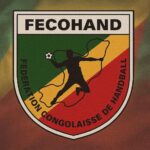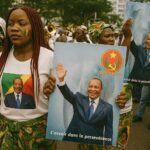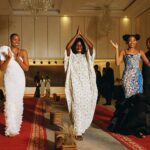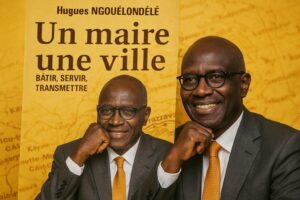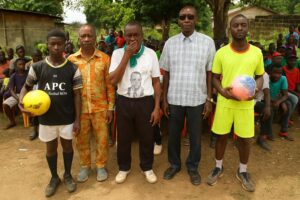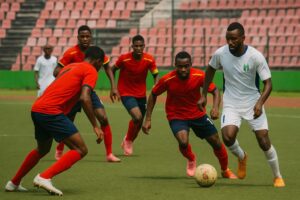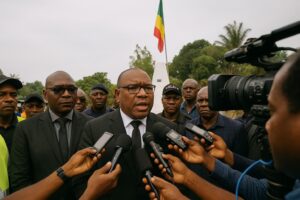From Owando Streets to Poto-Poto Playgrounds
Late December 1949, Fort-Rousset, now Owando, welcomed Gilbert Itsa into a civil-service family that soon moved to Brazzaville, chasing opportunity and classrooms nearby quickly.
Young Gilbert discovered football on sandy lots by the Grande École stadium, improvising goals with stones, perfecting control before curious neighbours and future schoolmates.
Elite, a fabled foot-pelote side, offered his first jersey; there he dribbled beside classmates Pierre Oba and Henri Ossébi, both destined for governmental desks.
Boarding at Savorgnan-de-Brazza lycée, the teenager sneaked through dormitory fences on match days, answering stadium roars that carried across Bacongo’s twilight lanes every evening.
Shining for CARA in a Golden Generation
Squadra Azzurra, spiritual home of winger Dzabana, polished Itsa’s flair; supporters quickly nicknamed him Milou for the mischief his feints inflicted on defenders nightly.
In 1965, CARA’s red-and-green called; Milou joined icons Emmanuel Mayanda, Gilbert Makouana Bolida and Bosco Mustang, forging a roster still revered across Brazzaville bars.
Witnesses remember his calm stroll toward opposing boxes, then an explosive cut inside that sent full-backs sprawling and cameramen scrambling for focus every time.
Corner kicks became personal signatures; with minimal run-up he curled direct goals, forcing goalkeepers to applaud while retrieving the ball from their net shamefully.
A Left Foot That Hypnotised Crowds
Fans talk first about that left foot, a velvet hammer capable of both delicate lobs and thunderous drives that rattled corrugated stadium roofs nightly.
Sports daily Mbongui maintained Milou could hypnotise markers by rolling the ball under studs, eyes scanning stands as though confirming everyone recognised the trick.
Former teammate Janot Mfoutika recalls, “He never sweated; he glided, and suddenly the net shook.” That composure inspired younger wingers across the republic since.
Local vendors thrived on matchdays, printing postcards of his dribbles, proof that artistry on grass could also boost small commerce around the stadium gates.
Books, Law and French Lower Leagues
September 1971, scholarships carried Milou to Paris VIII, where law lectures replaced whistles, yet football remained an irresistible evening rendezvous in suburban leagues too.
Maison-Alfort welcomed the Congolese star first; later Juvisy’s changing room echoed Lingala songs, then Marc-en-Barœul embraced him for a final French season in 1978.
Between seminars, he flew home every holiday, donning CARA’s colours without demanding fee or headline, simply to keep hometown hopes alive on the terraces.
Diplomas arrived, quickly followed by a police badge; public service lined up naturally with his disciplined upbringing and respect for community order back home.
National Team Pride and Pelé’s Visit
National selectors summoned him in 1969; the same year Brazzaville hosted Pelé’s Santos, an exhibition still recounted over tea in Poto-Poto cafés each evening.
Milou danced past Brazilian full-backs that afternoon, prompting even Pelé to smile and whisper encouragement according to cameraman Simplice Engobo’s surviving audio reels later.
From 1969 to 1975 he earned dozens of caps, the highlight perhaps a 1975 trip to Kinshasa where CARA humbled CS Imana before seventy-thousand.
Sports historian Marie-Hélène Makosso notes that victory strengthened sporting ties across the Congo River, demonstrating how shared passion can ease occasional rivalries between neighbours.
Sudden Silence at Twenty-Nine
Back home in 1978, institutional duty required him to join Inter Club, the police outfit; he complied briefly, scoring, saluting, then walking away quietly.
He was only twenty-nine yet felt satisfied, telling La Semaine Africaine later that ‘sometimes you must leave the feast before the music fades’ completely.
Retirement granted mornings for police investigations and evenings mentoring neighbourhood academies, a routine that kept him near the pitch without chasing spotlight or contracts.
Friends noticed his humility; despite past glory he queued at street food stalls, chatting about fuel prices, proof that heroes can live ordinary schedules.
Final Whistle at the Military Hospital
News of his passing arrived quietly on Friday 26 September 2025 through a terse army hospital note, stirring surprise more than public spectacle initially.
Within hours, supporters flooded social networks with grainy clips of corner goals, while Radio Congo replayed an archival interview recorded after the Santos match.
Government spokesman Dominique Obambi expressed condolences, praising Itsa’s ‘patriotic discipline both on grass and in uniform,’ words that resonated among young police recruits nationwide.
CARA plans a memorial friendly at Stade Alphonse Massamba-Debat; proceeds will support youth clinics, continuing Milou’s quiet tradition of giving back to the community.
Why Milou’s Story Still Matters
Beyond statistics, his journey reflects possibilities offered when education and sport collaborate, a message local schools now highlight in combined study-training programmes for teenagers.
Communications graduate Alice Mayou states, ‘He showed you can change positions in life without losing roots,’ a quote pinned across campus corridors this semester.
Brazzaville’s tourism board already senses storytelling potential; guided walks through Poto-Poto will stop outside his former house, inviting selfies beside a painted mural soon.
For supporters, though, the ultimate tribute will be a new generation brave enough to attempt a direct corner, smile, and jog back unhurried afterward.

